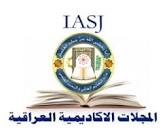Environmental Consequences of Soil Heavy Metal Contamination in Gharyan Regions, Libya: A Comprehensive Study
Abstract
The proximity of military encampments and barracks to groundwater reservoirs and agricultural regions in Gharyan has raised environmental and health apprehensions among local inhabitants. Given the potential hazards, an analytical study was initiated to gauge the extent of soil contamination in areas influenced by military activities.This research aimed to determine the concentrations of select heavy metals (zinc, copper, lead, and cadmium) in soil samples sourced from specific sites associated with military engagements. Additionally, the study evaluated the soil's pH levels. Soil specimens were amassed from three primary locations: the former Sahban camp, the Abu Ghaylan zone, and an area affiliated with the Eighth Battalion. A fourth specimen, taken from a non-affected region, was a control. Sampling was conducted at three depth intervals: 0-20 cm, 20-40 cm, and 40-60 cm. The quantification of heavy metals was accomplished using atomic absorption spectroscopy (220GQER006). When juxtaposed with the control specimen and standards set by the World Health Organization, samples from the military-influenced sites exhibited elevated concentrations of lead, copper, and cadmium. Distinctly, the Eighth Battalion-associated site (sample 3) demonstrated the highest lead content at 2093 mg/Kg. Meanwhile, the Sahban campsite (sample 1) recorded a peak copper concentration of 460 mg/Kg, and cadmium was most pronounced in sample 3 at 45.8 mg/kg. In contrast, zinc concentrations were found to be within permissible thresholds. The pH analysis showed the soil to be mildly alkaline, with values ranging from 6.9 to 8.77.




